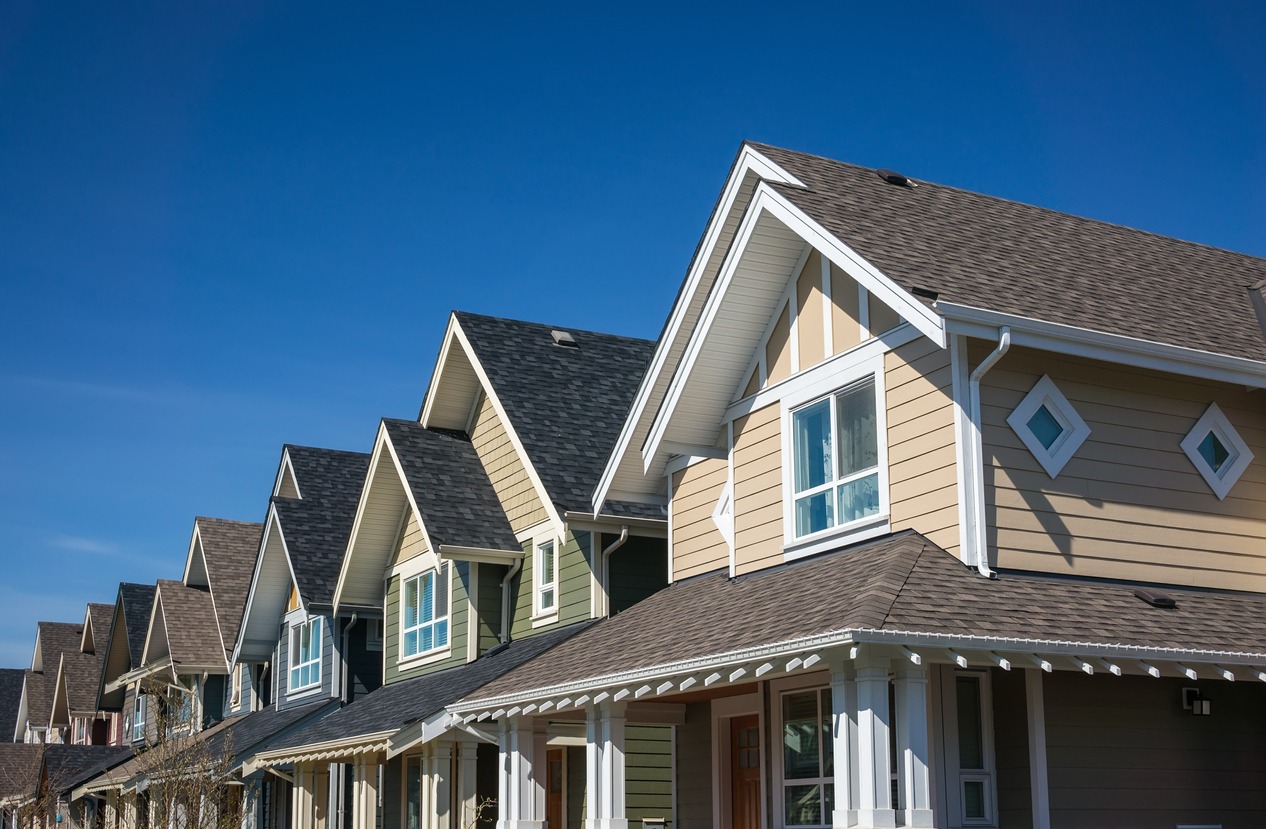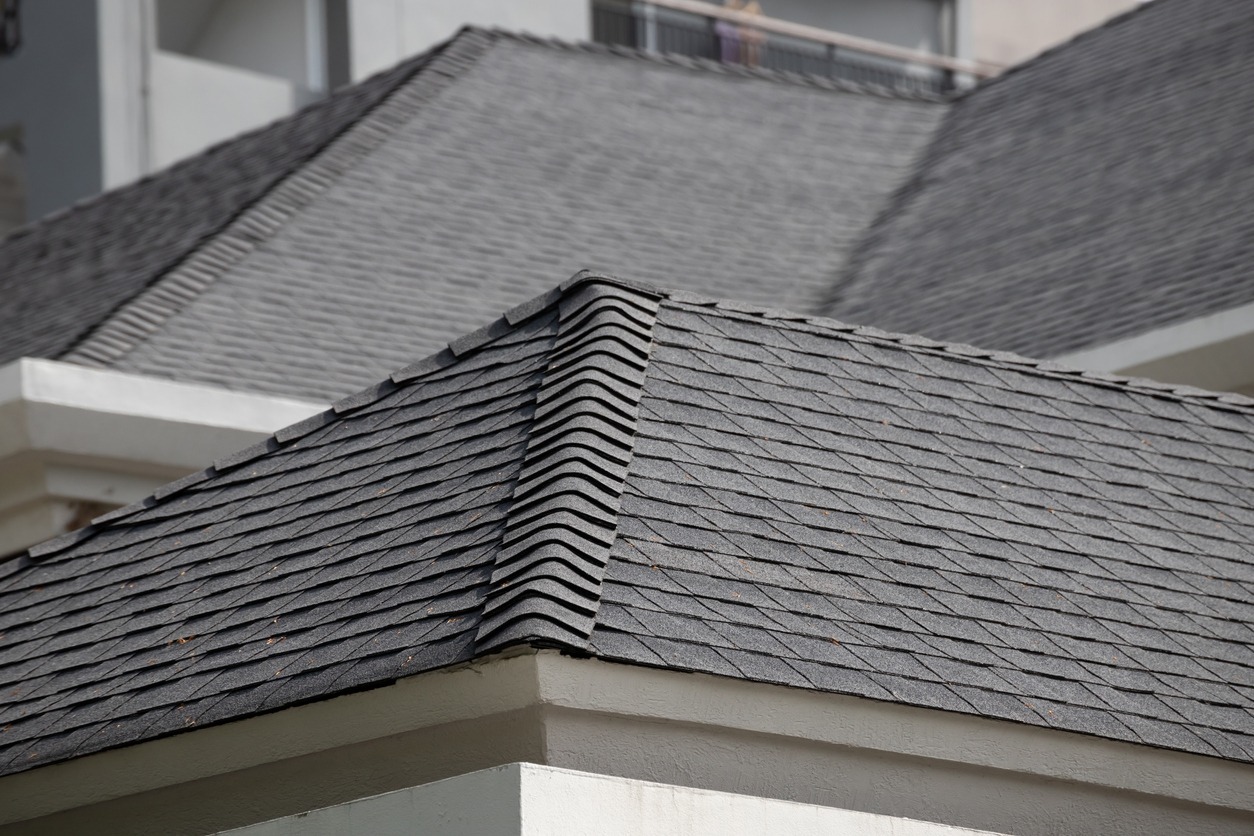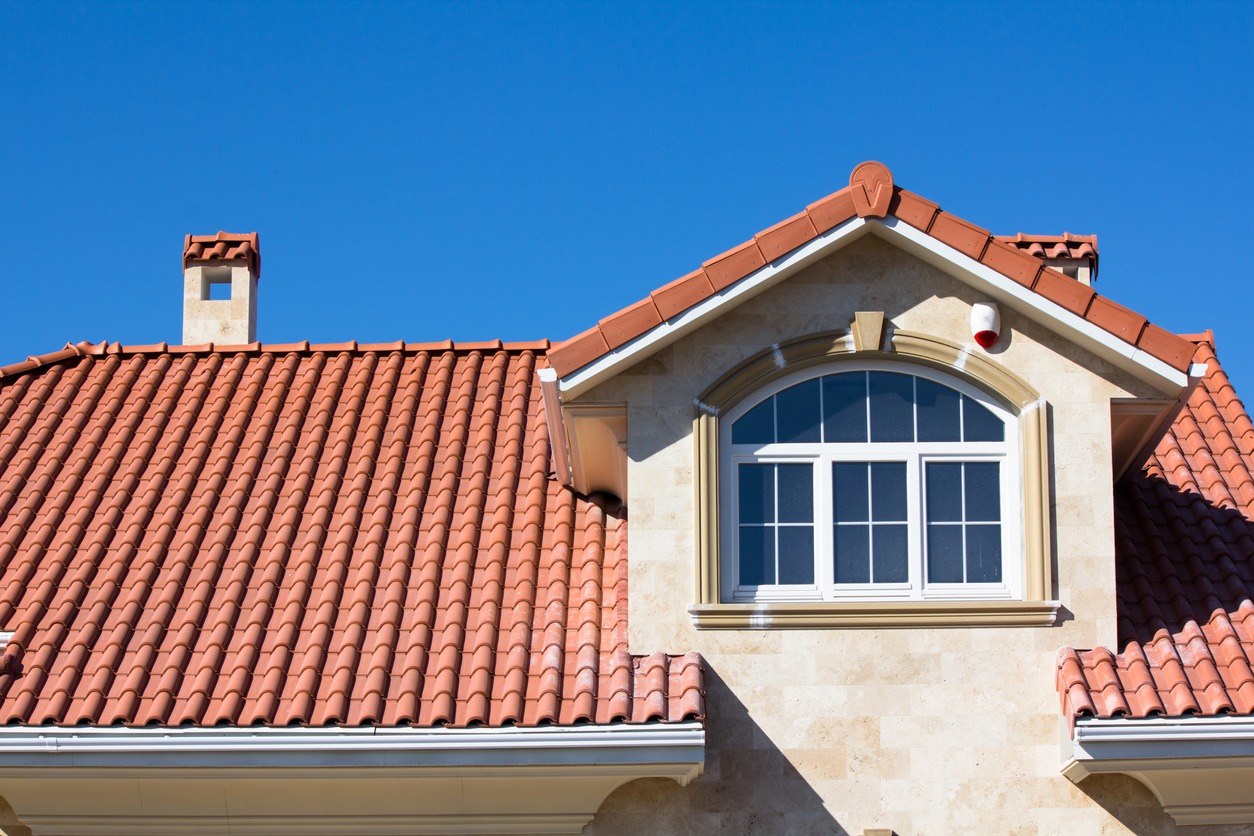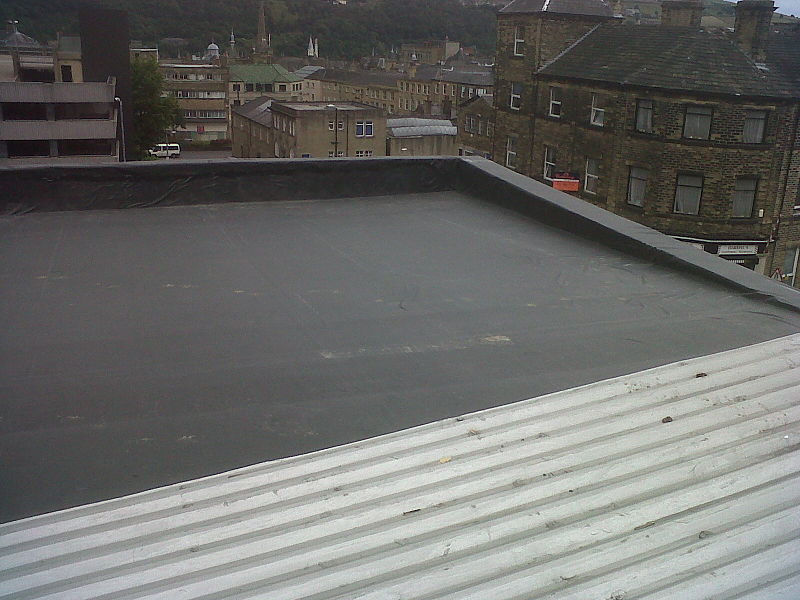Picking the right roofing materials is crucial for your home. It’s important to match your roof with your climate to protect it from the elements and prepare for possible natural disasters. In colder places, heavy snow and ice can harm your roof. In hotter areas, you want to avoid your roof absorbing too much heat and making your home hot. By using a suitable roofing material for your location, you’ll prevent damage and unexpected maintenance issues, giving you peace of mind.
Why Material Matters
The choice of roofing material is essential because climates differ, and each material has its strengths. You need to factor in temperature, weather elements like snow and rain, and the possibility of natural disasters like hurricanes and tornadoes. Some materials handle intense heat well and reflect sunlight to keep your home cool. Others can withstand strong winds during hurricanes or adapt to temperature changes throughout the year. So, selecting the right shingles for your roof is crucial.
Here are some factors to consider when choosing a roofing material for your home:
- Average temperature
- Seasonal temperature and weather variations
- Probability of natural disasters such as floods, hurricanes, forest fires, and tornadoes
- Common weather patterns like snow, rain, or high winds
- Sunlight exposure
- Average wind speed and direction
- Local geography
- Precipitation levels
Here are some questions to help you decide:
- How heavy is the material?
- Will it require specific framing?
- Does the material meet local fire code requirements?
- Are there any unique installation or maintenance concerns?
- What is the product’s lifespan?
- Is there a warranty?
- Does the material perform well in extreme weather conditions typical of your area?
Different Types of Roofing Materials
1. Asphalt Shingles Roof – Best for Cold, Windy, and Humid Climates
Asphalt shingles are a popular choice for roofing in many developed countries, especially in the U.S., because they offer various benefits. They are affordable, durable, and can last for over 25 years with proper maintenance. These shingles can withstand high humidity levels if treated with algaecides and are also suitable for cooler climates as they can retain heat.
Asphalt shingles are lightweight and come in a standard 3-tab design with a wind rating of 60 mph. The dimensional asphalt shingle is slightly more expensive but has a higher wind rating, between 110 and 130 mph, and tends to look more appealing. Several grades are available, and some are thicker and stronger than others. Heavy-duty varieties are best for areas frequented by storms and high winds. If your area is hurricane-prone, asphalt shingles with high wind ratings are your best choice.
In hot climates, lighter-colored asphalt shingles are a smart choice because they reflect light and keep the roof cooler compared to darker versions. They are also more cost-effective than other roofing materials suitable for hot climates. In fact, approximately 80% of U.S. homes use these shingles due to their ability to help maintain a cooler indoor temperature and save on energy costs.
Common Issues
Asphalt shingles do wear out over time and may require frequent repairs. Moreover, in heavy winds, they may be prone to blowing off the roof, although many shingles come with warranties. Shingles are not waterproof, and in cold climates, they may be prone to ice dams, which can cause water penetration. To address this, it’s essential to install ice and water shield along the eaves and valleys to reduce the risk of water damage.
It’s also suitable for hot weather, but they don’t last as long as other materials for warmer climates. They typically need to be replaced between 15 to 20 years and are prone to wind damage. It’s also less energy-efficient than other choices for warm climates.
Cost
Asphalt shingles are more budget-friendly compared to materials like slate, making them a popular choice for many homeowners. This type of roofing costs $5,000 to $8,000 for a 2,000-square-foot roof.
2. Metal Roofing – Suitable for All Kinds of Climates
Metal roofing is a highly sought-after option for both hot and cold climates because it’s durable and cost-effective. It can also suit those homes in humid and rainy climates, windy and hurricane-prone areas, and coastal environments. Although it’s more expensive than asphalt shingles, it offers long-lasting performance, sometimes lasting up to 75 years. Properly maintained metal roofs can last up to 80 years, but repairs can be challenging due to large sheet installations. In some climates, metal roofs may be prone to rust or denting from hail.
In cold climates, it allows snow and ice to slide off easily, preventing ice dams and prevents damage from wind storms. In hot, humid areas, metal roofing resists moisture and reflects heat, helping to keep homes cooler during scorching summers. Light-colored metal can reflect light and reduce cooling costs. They can last two to three times longer than asphalt shingle roofs, making them a worthwhile investment. Metal is also fire-resistant, adding to its suitability for hot environments. With proper maintenance, metal roofs require minimal care.
Common Problems
If you choose a metal roof, remember to install a snow guard to stop ice from accumulating on the walkways below. Rust can be an issue with metal roofs, depending on the construction materials. In colder climates, consider adding extra insulation to help your heating system work more efficiently and avoid high utility bills. The good news is that in the summer, metal roofs keep your home cool, which is a nice bonus.
Cost
Metal roofing costs vary by region, with a national average between $5,300 and $14,700 for installation. Galvanized steel roofs cost around $3,000, while 3-tab asphalt shingles cost about $2,500.
3. Clay Tiles – Great Option for Hot and Humid Climates
Clay tiles are a popular choice for homes in hot, humid, and tropical areas due to their beautiful, rustic appearance and weather resistance. It’s common in most regions of Spain, Italy, Mexico, and the American Southwest. They have been used for thousands of years due to their light color, durability, and thermal resistance. As the regions receive lots of heat and sunshine, clay tiles provide cooling benefits, as well as traditional aesthetics. They reflect heat and withstand the elements well, making them suitable for such climates.
Though clay tiles are great insulators and can handle snow and ice, they may be vulnerable to extreme wind or hailstorms. Despite this, they are a popular choice for homes with a Spanish or Mediterranean architectural style. They offer excellent airflow and reduce cooling costs. Barrel clay tiles are the best roof shape for hot climates because they allow for airflow and help dry out tiles in high-humidity areas.
Common Issues
Clay tiles are quite heavy, so some homes may need additional structural support to handle the weight. Installation can be tricky, especially on roofs with complex angles and valleys. While durable, individual tiles can be damaged during repairs if not handled with care.
Clay can also chip and crack over time, and if they sustain an impact, it can be hard to repair a single area.
Cost
Clay tiles are relatively inexpensive to source, resulting in lower installation costs compared to metal or synthetic materials. The average cost for a full clay tile roof is around $13,000.
4. Slate Roof – Great for Cold and Snowy Climates

Slate tile has been used as a roofing material for centuries and is a traditional European roofing choice that made its way to the Americas in the 17th century. It’s known for its durability, natural color range, and low maintenance requirements. Light and earth-toned slate tiles are reflective, helping to reduce heat absorption by buildings. Over time, slate tiles develop a beautiful finish.
Slate roofing is an excellent choice for all types of climates due to its natural, efficient, and fire-resistant properties. It can last over 150 years and is immune to the effects of heat, cold, moisture, and humidity.
Slate roofs offer exceptional insulation and strength, making them ideal for harsh winters and blizzard-like conditions. They excel on sloped roofs, making them popular in snowy regions.
Since they are made of natural stone, providing excellent resistance to weather and fire. They come in various natural colors and are a great investment, especially in areas with strict roofing regulations due to fire risks.
Common Issues
One concern with slate roofing is that some homes may need significant retrofitting to handle the extra weight, adding to the overall cost. While slate can last 50 to 100 years, individual tiles are fragile and can break easily underfoot during repairs. Despite their durability, slate tiles can chip or flake over time, and repairs can be complicated and expensive.
Since the material is heavy, making transportation and installation are more challenging than lighter materials. Despite its popularity as a cool roofing material, it may be costly in areas without natural slate reserves. Reclaimed or salvage slate is available in some places, but overall costs can still add up.
Cost
Slate roofing is costlier, ranging from $10 to $30 per square foot, and may require extra structural support due to its weight. For a 1,600-square-foot home, the cost could be around $25,000. Additionally, repairing broken slate tiles can be expensive.
5. Rubber Roofing – Excellent for Humid, Rainy and Cold Climates
Rubber roofing is becoming a popular choice for homeowners due to its efficiency, resilience, and affordability. Surprisingly, it can be designed to resemble other materials like clay, slate, or wood. This versatile roofing option is recommended for most types of climates.
Rubber roofing offers an affordable alternative to expensive terra cotta and slate options. It can mimic the appearance of these materials while being made from recycled materials, contributing to the home’s energy efficiency as rubber provides excellent insulation. Rubber is waterproof, and it can provide a good seal against water infiltration.
For hot climates, a special type of rubber-like membrane roofing is made from a weather-resistant thermoplastic or synthetic rubber called EPDM (ethylene propylene diene monomer). This technology is lightweight, durable, and reflective, preventing sun absorption into structures. It serves as a waterproof barrier and is ideal for green roofing as well.
EPDM roofs offer excellent fire resistance, making them a safe choice for your home. Some manufacturers even provide warranties of up to 30 years, ensuring long-term protection. However, it’s essential to avoid any work that may void the warranty.
Rubber roofs are remarkably lightweight compared to other materials, providing added convenience during installation. You can find them in various styles, including shingles, for a classic appearance. Moreover, rubber roofs are versatile and can fit different roofing styles, making them ideal for unusually shaped roofs.
Common issues
EPDM roofing, while providing decent protection in many situations, is more susceptible to damage compared to other materials. It is also prone to shrinkage the more it is exposed to extreme elements, causing rubber roofs to shrink. This leads to potential leaks as seams come apart and cracks form.
To prevent this issue, applying acrylic paint can help, but in dry climates, it may still be a concern. Poor installation can cause a roof to crack from shrinkage in as little as seven years, highlighting the importance of regular inspections to seal any leaks before they cause harm. However, detecting these leaks can be challenging until visible signs of damage appear within the building.
Cost
The price of rubber roofing is comparable to asphalt at $4-$8 per square foot, but it offers better energy efficiency and improved protection against heat for your home.
6. Concrete Tiles – Suitable for Most Climates
Concrete roofing tiles may be heavy, but they come with several advantages, making them an excellent option for hot climates. They are relatively inexpensive, heat and fire-resistant, and highly durable. The best part is that they don’t absorb heat quickly, making them ideal for hot weather. Additionally, concrete tiles can be designed to mimic other roofing materials.
Concrete tiles are composed of sand, water, and cement, but the baking process gives them durability to withstand rain, heat, and wind. Impressively, some concrete tile roofs in Europe and other regions have surpassed 150 years of age and continue to provide excellent coverage and cooling as originally intended.
However, it’s essential to consider the climate-specific characteristics of each roofing material before making a decision. While concrete roofing is great for hot climates, it may not be suitable for areas with rapid freeze-thaw cycles and extreme winters, especially at higher elevations. Specialized concrete roofing products designed for cold climates can be considered in such cases.
For hot climates, concrete tile roofing is a cost-effective and durable option that reflects the sun’s rays and helps keep your home cooler. It’s also fireproof and solid, making it a reliable choice for warm weather durability. Using specialized “cool colors” can further enhance its energy efficiency by reflecting more sunlight.
Installers should follow minimum code requirements for environmental conditions, and in areas with hurricane-force winds, additional precautions may be necessary to secure the tiles properly.
Common Issues
Concrete tiles are relatively heavy and have a higher water absorption rate, which can lead to cracking and structural damage when ice and snow accumulate. Despite these concerns, concrete tile roofing remains a durable and popular choice, with some roofs lasting over 150 years.
Costs
High-end concrete roofing that is designed to withstand cold weather costs around $20,000 and $40,000 for the whole roof. Concrete roofing for hot climates is cheaper.
7. Green Roofs – Adapts to Any Kind of Climate
Green roofs are gaining popularity due to their environmental and economic benefits. They transform urban spaces into sky-high gardens, providing rooftop greenery and cleaner air in cities worldwide. Biophilic design brings natural touches to urban areas, offering numerous advantages. However, not every building is suitable for a green roof, and proper setup and maintenance are crucial.
Green roofs consist of plants and moss growing over a waterproof membrane, typically made of EPDM. The soil’s cool temperature and plant growth help keep the building cool by preventing heat absorption. During colder months, green roofs act as effective insulation to prevent heat loss. Water runoff from the plants also aids in cooling the building and extends the roof’s lifespan.
This type of roof can be adaptable to any kind of climate. In hot and humid areas like tropical countries, the green roof must be designed to handle repeated storms, and it must have proper drainage. In colder regions, it must be able to sustain moisture levels and have extreme drought tolerance. The plants to be used must also adapt to the
Common Issues
installing and maintaining green roofs require planning, expertise, and resources. They can be installed on traditional roofs, but upkeep may include regular watering, weed control, and pest management. A professional architect and builder must be hired to ensure proper installation and avoid potential issues like leaks.
To combat the heat island effect, green or living roofs offer a solution to urban areas with dark asphalt roofs and roadways. They incorporate a waterproof membrane filled with soil and vegetation, naturally cooling through soil temperature and plant growth. Living plants release oxygen, making the air less toxic than traditional roofs. While green roofs have been successful in modern Europe, the implementation on a large scale may still take time due to higher costs and the need for expertise and vision.
Cost
The cost of a green roof is approximately $25 to $30 per square foot, covering expenses for design, materials, labor, and installation. However, it’s important to note that this estimate does not include the standard costs for replacing or repairing the underlying roof if required.
Summary
Best Roofing Material for Hot Climates
- Metal Roofing: Metal roofs are highly reflective and can efficiently reflect sunlight, keeping the building cool and reducing energy consumption.
- Clay Tiles: Clay tiles have natural reflective properties and excellent insulation, making them suitable for hot weather. They keep the building cooler by preventing heat absorption and can last for many years.
- Light-colored asphalt shingles: Light-colored asphalt shingles can reflect more sunlight than darker ones, helping to keep the interior of your home cooler.
Best Roofing Material for Cold Climates
- Asphalt Shingles: Asphalt shingles provide good insulation and have the ability to withstand low temperatures and snow.
- Slate Tiles: Slate is durable and impervious to freezing and thawing cycles, providing excellent resistance to cold weather.
- Metal Roofing: Metal roofs can effectively shed snow and ice, preventing ice dams and heavy snow buildup. They are durable and can withstand extremely cold temperatures and harsh winter conditions.
Best Roofing Material for Humid and Rainy Climates
- Metal Roofing: Metal roofs are highly durable, rust-resistant, and can effectively shed water.
- Concrete Tiles: Concrete tiles are non-porous and can withstand heavy rain and humidity.
- Rubber Roofing: Rubber roofing is waterproof and can provide a good seal against water infiltration.






